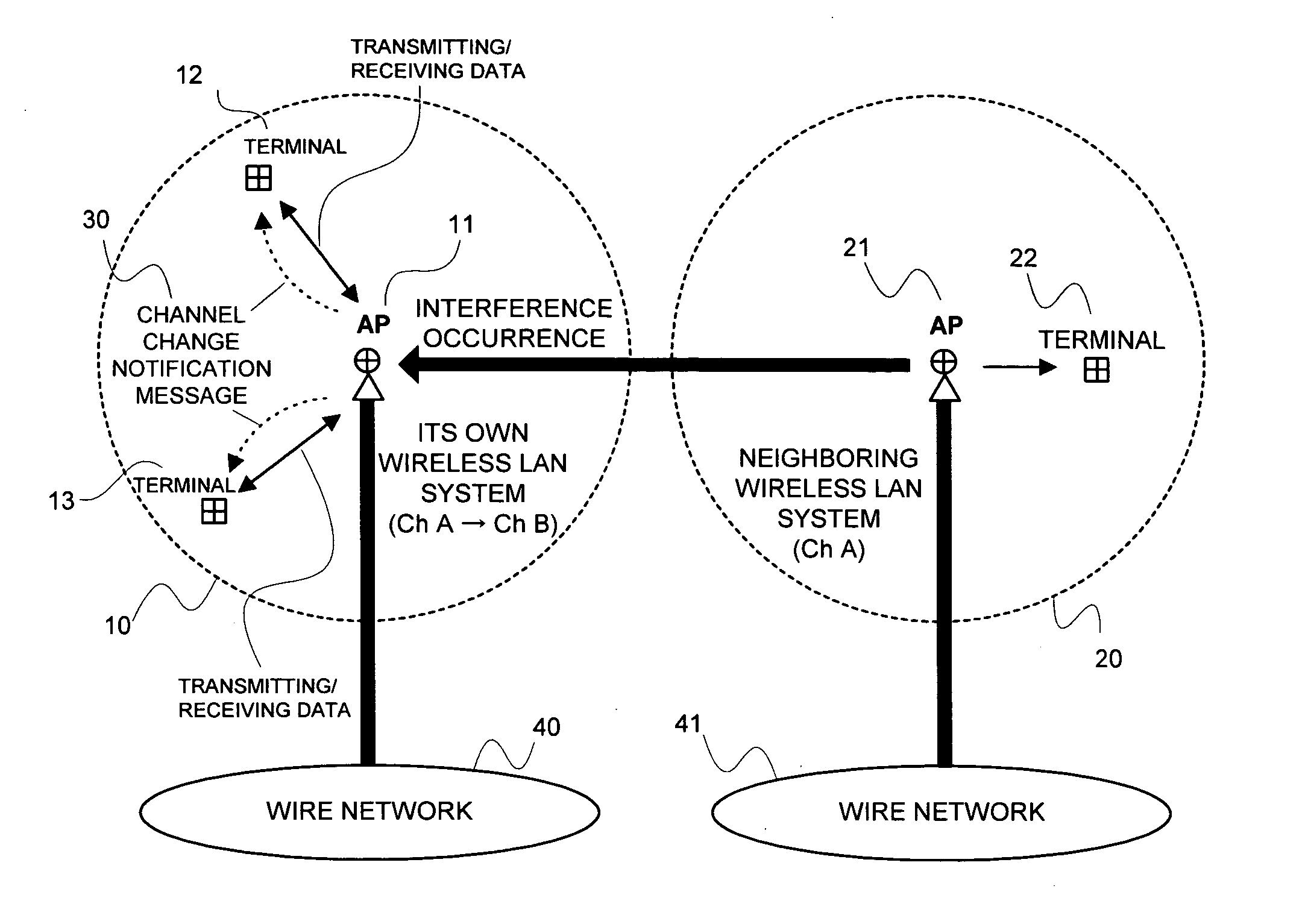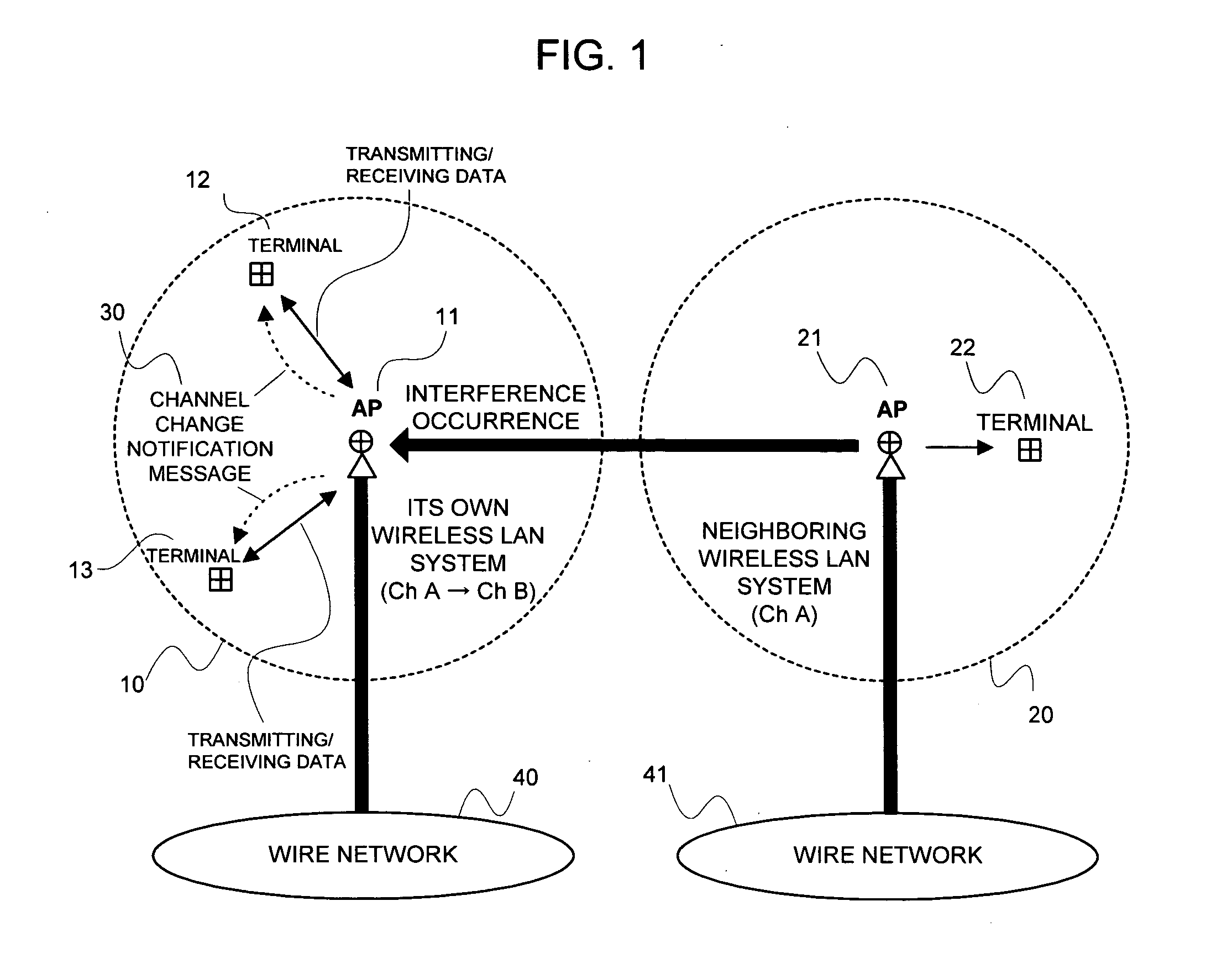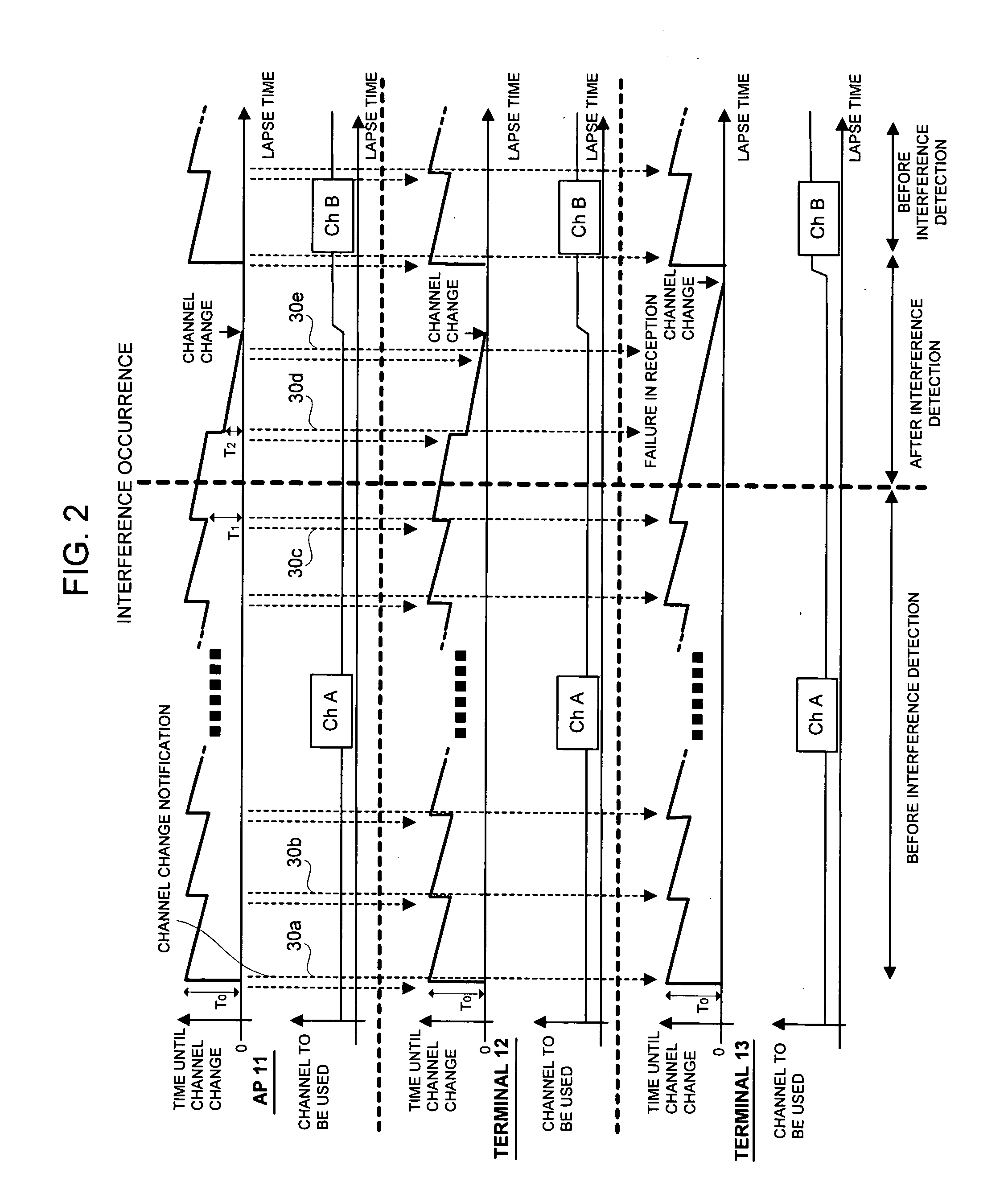Channel selection method, and wireless station and wireless terminal employing it
a wireless network and channel selection technology, applied in the field of communication channel selection method and wireless station and wireless terminal employing it, can solve the problems of communication disconnection time, degraded communication performance of its own system, and inability to connect to the ap and the terminal, so as to achieve the effect of drastically reducing the load of each ap
- Summary
- Abstract
- Description
- Claims
- Application Information
AI Technical Summary
Benefits of technology
Problems solved by technology
Method used
Image
Examples
embodiment 1
[0049] [Embodiment 1]
[0050] Next, the embodiments of the present invention will be explained in details, by making a reference to the accompanied drawings. FIG. 1 illustrates a network system in the first embodiment of the present invention. A wireless LAN system 10 that is configured of an access point (hereinafter, expressed as an AP) 11 and wireless terminals 12 and 13, and a wireless LAN system 20 that is configured of an AP 21 and a wireless terminal 22 exist herein. Also, the AP 11 is connected to a wire network 40, which allows the wireless terminals 12 and 13 to make communication with appliances on the wire network 40 via the AP 11. Similarly, the AP 21 is connected to a wire network 41, which allows the wireless terminal 22 to make communication with the appliances on the wire network 41.
[0051] Additionally, in FIG. 1, the wire network 40 and the wire network 41 were separated for illustration; however a single wire network may be configured of these.
[0052] In this embod...
embodiment 2
[0103] [Embodiment 2]
[0104] As the case may be, the interference status is improved during the time until the channel change is executed since the interference detection in the foregoing first embodiment. A necessity for the channel change is lost in such a case, so a technique adapted to continuously use a channel identical to the channel before the interference detection is a second embodiment.
[0105]FIG. 8 is a timing chart illustrating an operation of the second embodiment of this FIG. 2, and parts identical to that of FIG. 2 are indicated with identical codes. By making a reference to FIG. 8, after the interference detection, the AP 11 transmits the channel change notification message 30d to the terminals 12 and 13; however when the interference status is improved within the channel change time by this message 30d, the interference detection means 105 (see FIG. 3) detect this, and make an operation so that the time until the channel change, which is a time longer than the curre...
embodiment 3
[0109] [Embodiment 3]
[0110] Next, a third embodiment of the present invention will be explained. In this embodiment, the channel change notification message is transmitted before the interference occurrence, and the transmission of the channel change notification message is not made after the interference occurrence. Making a channel change notification in advance before the interference occurrence aims at enhancing the provability that the channel change notification message is received in the wireless terminal.
[0111]FIG. 11 is a timing chart illustrating an operation of this embodiment, and parts identical to that of FIG. 2 are indicated with identical codes. FIG. 12 is a flowchart illustrating an operational procedure of the AP 11 of this case, and steps identical to that of FIG. 5 are indicated with identical codes. By making a reference to these FIG. 12 and FIG. 13, in this embodiment, the AP 11 has an operation identical to that of the first embodiment shown in FIG. 2 and FIG...
PUM
 Login to View More
Login to View More Abstract
Description
Claims
Application Information
 Login to View More
Login to View More - R&D
- Intellectual Property
- Life Sciences
- Materials
- Tech Scout
- Unparalleled Data Quality
- Higher Quality Content
- 60% Fewer Hallucinations
Browse by: Latest US Patents, China's latest patents, Technical Efficacy Thesaurus, Application Domain, Technology Topic, Popular Technical Reports.
© 2025 PatSnap. All rights reserved.Legal|Privacy policy|Modern Slavery Act Transparency Statement|Sitemap|About US| Contact US: help@patsnap.com



